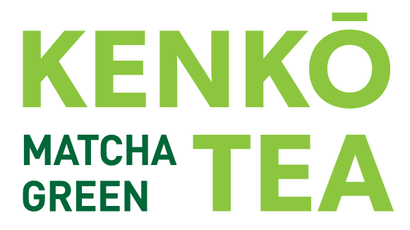
(Photo Matcha Powder via @beingglutenfree)
Yerba mate, or mate, is a hot new trend in the tea drinking world and has been recognized by many health experts around the globe for its benefits.
But tea lovers can often confuse mate and matcha. So we want to break down some facts about mate and matcha, to explore their differences.
This is not really about who is the winner. Both drinks are healthy and have amazing health benefits for us. At the end of the day, we will leave it to you to decide. Though as you can tell, we’ve made our choice!
1. Origin
Matcha green tea is originally from China and was brought to Japan by a Zen monk who developed a ritual for consuming powdered tea in the year 1191. This ritual has been passed down through the years to become the matcha we know and love today, be it the ceremonial type used in tea ceremonies or the culinary mix used for baking and drinks like matcha lattes.
---
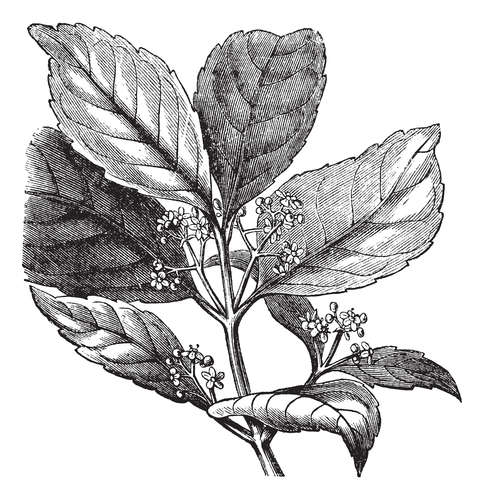
Mate is derived from a plant native to tropical rainforests in Brazil and Paraguay in South America. It was found and used as a cultural drink by the ancient Guarani Tribes, then recognized by missionary Jesuit priests who helped it become a popular social drink.
2. Taste & Form
Matcha is green tea leaves crushed into a powder form. It has a bright, vibrantly green color due to the special method of its cultivation. The leaves are de-veined and de-stemmed, which helps the matcha powder become fine and smooth.
The taste of matcha is naturally sweet with a slight vegetal or grassy overtone and a hint of astringent, which makes it pair very well with other flavors in baking or beverages.
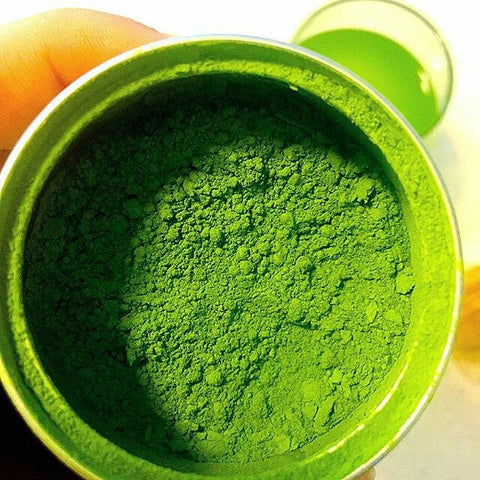
(Photo via @beingglutenfree)
---
Mate is made from dried leaves ofIlex paraguariensis tree in South America. People harvest the leaves in the forest and dry them for consuming.

Mate has the acquired taste, which is a slight astringent bitter flavor, caused by the high tannin content in the leaves. Also, the veins and stems are not removed from the plant, so mate typically has a strong woody flavor. To make the taste more palatable, sweetener is sometimes added.
3. Preparation
Matcha is versatile and easy to mix with other flavors. You can prepare traditional matcha tea by whisking the powder in hot water. For cooking, you can add matcha powder to make your recipes more unique and delicious. Want some ideas? Visit our matcha recipes page here!
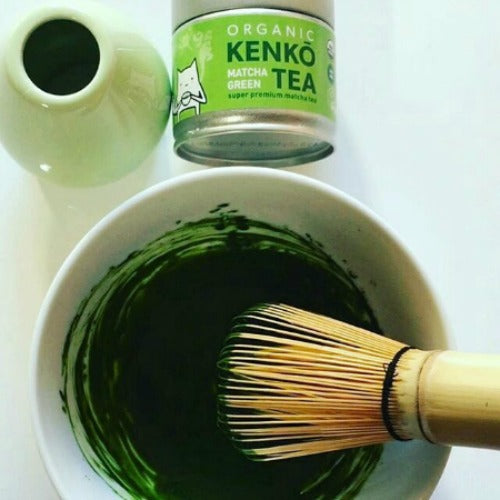
(Photo via @yummiegirl)
---
Mate is prepared like steeped tea, with the dried leaves immersed in hot water inside a traditional hollow gourd. When ready, the tea is sipped through a metal straw called bombilla.
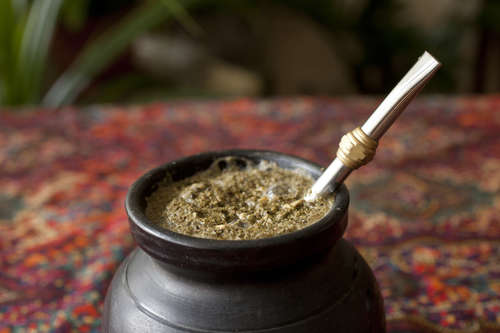
Mate is not consumed in any other way beside drinking. The leaves are not versatile as a powder form, so we can’t guarantee how it would turn out if you incorporated mate into other recipes!
4. Nutritional Facts
Matcha is rich in nutrients and essential vitamins, including vitamin C, zinc, and potassium. It’s low in calories and cholesterol, which is great for your waistline and cardiac health.
There’s also caffeine and an important amino acid called L-theanine, along with a high antioxidant content including catechins and chlorophyll.
---
Mate also contains lots of vitamins and minerals. It is abundant in amino acids, antioxidants, caffeine, theophylline, and theobromine -well-known stimulants also found in tea, coffee and chocolate.
Mate is low in calories and beneficial for weight management.
5. Caffeine

Matcha contains roughly 75mg caffeine in 8 fl. oz, which is a small amount compared with coffee. Unlike coffee, matcha also hasL-theanine, an amino acid, that works together with caffeine.
This amino acid is known for its ability to promote relaxation and concentration. Its combination with the caffeine in matcha helps improvecognitive performance, and also helps prevent caffeine’s usual side effects like an energy crash or jitters.
---
Mate has 80mg caffeine per 8 fl. oz, which is similar to matcha. There are many sources that say mate does not contain caffeine, but instead has ‘mateine’ as its active stimulant. However, more research is needed to support this claim.
Similar to matcha, most mate consumers don’t experience the negative side effects of the caffeine content. But unlike matcha, mate does not contain L-theanine and the synergy effect of this amino acid and caffeine.
6. Antioxidant
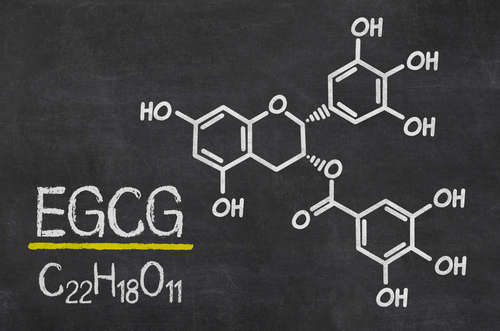
Matcha is abundant in antioxidants, with an ORAC value of about 1350 units per gram. Matcha helps boost metabolism, reduce inflammation and aids in preventing the growth of cancer cells. It also slows bacterial growth that leads to plaque buildup on teeth or acne on skin.
The most significant antioxidant found in matcha is calledepigallocatechin gallate or EGCG. It is well-known for its amazing effect onweight loss, improving metabolism and reducing the risks of various diseases. It’s also great for yourteeth andskin, due to its anti-microbial and anti-inflammatory properties.
---

Mate is also super rich in antioxidants, with an ORAC value of about 6,000 units. The primary antioxidant is Chlorogenic Acid, which is potent for slowing the release of glucose in the body, reducing blood pressure, cholesterol and helping fight cancers and bacteria.
Some researches show that, like matcha, yerba mate also aids weight loss by reducing appetite, increasing energy expenditure, burning stored fat and improving insulin sensitivity.
7. Benefits on Energy

With the tag team of L-theanine and caffeine working away, matcha can amazingly improve your mood, sharpen concentration and increase your energy - with the effects sustained for a long period of time.
Research shows matcha green tea boosts energy expenditure by up to 8% and helps keep those increased energy and concentration levels going for between 4-6 hours. It’s also a super helpful supplement for your workout routine, as matcha can prolong physical endurance and enhance performance.
---
Mate also delivers a balanced energy boost, stimulating concentration and alertness without an energy crash, due to the low amount of caffeine compared to coffee. Similar to matcha, yerba mate is also capable of increasing energy expenditure and delaying physical fatigue during exercise.
8. Weight Loss Potential
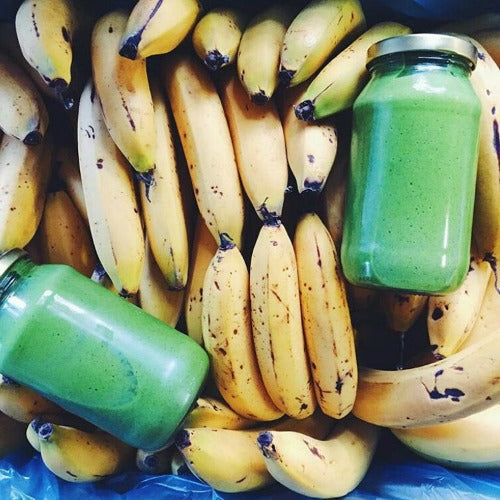
(Photo via @eatwithandy)
Matcha is great for weight management due to the abundance of EGCG. EGCG promotes fat burning for energy by 17% and increases the metabolic rate up to 40%. It prevents fat absorption and accumulation, especially for abdominal fat.
A study has shown that combining matcha and exercise can also increase up to 89% of fat burned. It is also known to reduce cholesterol in blood which prevents obesity and heart diseases.
---
Mate is also potent for helping weight loss by increasing the amount of fat you can burn, boosting energy expenditure and promoting a feeling of fullness, which stops cravings. Mate also has the ability to improve your digestion, which in turn helps boost metabolism.
9. Skin Care Potential
The abundance of antioxidants in matcha makes it perfect forskin care. We see a growing trend of incorporating matcha in manybeauty care products these days and it doesn’t seem to be slowing down.
With its amazing anti-inflammatory and antibacterial properties, matcha can reduce acne, prevent skin aging and the risk of cancers by suppressing UV-induced damage. EGCG also improves skin structure by enhancing blood flow and increasing hydration.
You can use matcha orally by drinking it, or topically by applying it directly on your skin. Matcha can also be incorporated with any skin care products.
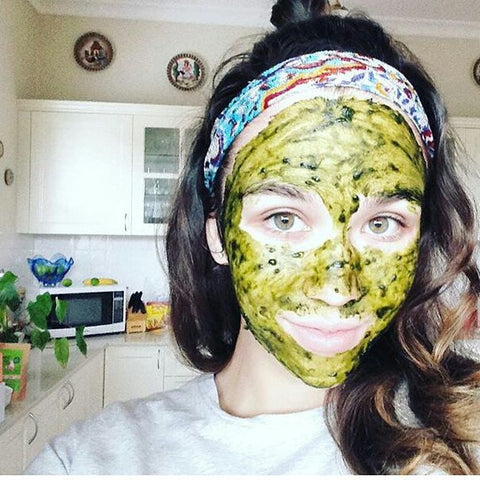
(Photo via @natalieparpaiola)
---
Mate also contains a rich content of antioxidants, which is ideal for skin care. It has been shown to regulate blood circulation to the skin, reduce cellulite and stretch marks, and eliminate damaged cells.
Unlike matcha, you can’t use yerba mate topically on your skin. Drinking it is the way to get its benefits for your skin.
-oOo-
So have you decided which product you prefer? It’s a tough ask. Both of drinks are healthy for us in many ways and they share plenty great benefits for our bodies, minds and moods.
In the end, we think it doesn’t matter which one is better. You can enjoy matcha for its versatility and convenience, or yerba mate for the richness of antioxidants, or you can just have both!
At the end of the day, the most important thing is that you feel good - and matcha and mate can help do just that.
-----------------------------------------------
Love this post? Then, please don't forget to:
